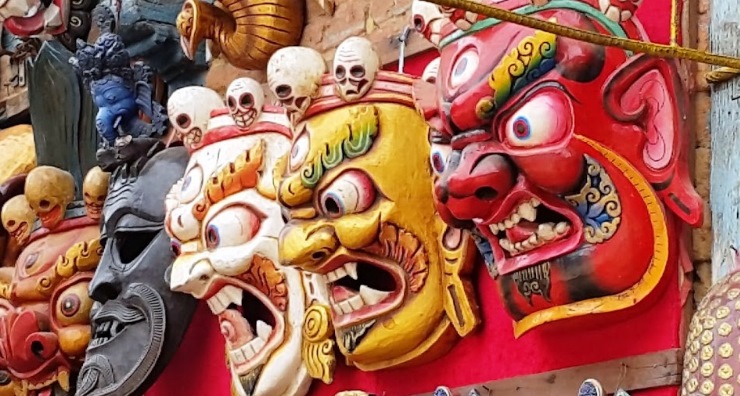Driving commercial and political engagement between Asia, the Middle East and Europe
Driving commercial and political engagement between Asia, the Middle East and Europe
Driving commercial and political engagement between Asia, the Middle East and Europe

There are two Indias. There’s the India that that the IMF and Moody’s see. That India is poised to become one of the key growth drivers for the rest of the world. In it’s World Economic Outlook for 2015, the IMF has predicted that India’s growth will pass China’s, and India will become the fastest growing emerging economy in 2015-16 by clocking a growth rate of 7.5 per cent.
That is also the India that ratings major Moody’s sees. Moody’s raised India’s credit rating outlook from stable to positive, giving a big thumbs up to the Narendra Modi government’s reform measures and policy initiatives, and even hinting at a rating upgrade 12-18 months from now.
There is the India that India’s CEOs see. A CEO survey by consultancy PwC found Indian CEOs to be the most optimistic in the world.
Asked whether they saw greater opportunities for growth in 2015, 84 per cent of Indian CEOs said “yes”. The global average was just 61 per cent. As many as 72 per cent of the respondents also said that they saw strong growth sustaining over the next three years as well.
Then there is the India seen by Moody’s ratings rivals Fitch and Standard & Poor’s. They have been much more circumspect about any rating uptick, with S&P going so far as to say that without further, and urgent reforms, especially fiscal reforms, the India growth story could come unstuck.
“Although India’s budgetary performances have strengthened in recent years, its hard-won fiscal improvements could yet unwind because of a financial or commodity shock. Subsidy spending is one key source of weakness, despite fuel-subsidy reforms in 2014,” S&P analyst Kim Eng Tan said in his report.
There is the India that many of India’s farmers and farm workers – who account for 49 per cent of the workforce but less than 18 per cent of the GDP – see. After a spell of unseasonal rains and hailstorms left large swathes of prosperous farmland devastated, there was a spate of suicides by farmers. So much so that last week, Devendra Fadnavis, the Chief Minister of Maharashtra, one of India’s wealthiest states and home to some of the country’s most prosperous commercial farmers, pleaded with affected farmers not to kill themselves, and assured that help would come. In Haryana, on the outskirts of the National Capital Delhi, the state’s Human Rights Commission served a notice to the state government, after three farmers reportedly committed suicide after losing their crops.
The interesting part is that in both the optimistic and pessimistic views, India’s charismatic Prime Minister Narendra Modi looms large. If India takes off, it will be because of Modi’s vision and drive. If it stumbles, it will be because of Modi’s inability to rein in India’s fiscal indiscipline, and deliver measurable governance improvement on the ground.
The trouble is, there are also two Modis. There is Modi, the ‘blue water’ Prime Minister, who hasn’t put a foot wrong in the foreign policy space since he swept into power with the largest popular mandate in three decades. And then there is Modi, the domestic leader, whose personal popularity has plummeted in just 10 months to a level where an opinion poll by news magazine India Today found that if elections were held today, his Bharatiya Janata Party might not be able to form a government on its own.
Modi might be wishing that leading his fractious nation involved only foreign visits. From getting Pakistan Prime Minister Nawaz Sharif to attend his swearing in, to dashing off to Bhutan immediately after (and thwarting the Chinese), to building bridges with neighbours Nepal and Sri Lanka to wangling massive investment commitments from Japan and China and even snagging US President Barack Obama as the guest of honour at India’s annual Republic Day celebrations, he has given a new thrust and energy to India’s foreign policy, even while subtly steering away from his predecessor Manmohan Singh’s clear US tilt.
But Modi is not enjoying such confident progress at home. After the euphoria of a string of victories in state-level elections in the first few months after he led the Bharatiya Janata Party to a stunning win in the national elections — its biggest win in three decades — came the shocker: a humiliating loss in February to the debutant Aam Aadmi Party (Common Man Party) in Delhi’s state assembly polls.
AAP managed to win 67 of the 70 seats in the Delhi state elections. Delhi’s urban middle class, which had voted overwhelmingly for Modi in the national elections, had swung largely against him. This, despite Modi having pitched the Delhi election as a virtual referendum on his vision for development, and personally leading the campaign himself.
It is not difficult to see what is making India’s business leaders optimistic about the future, or why Moody’s analysts are bullish on India. Modi has pushed a serious reform agenda with vigour. He has deregulated fuel prices, allowed greater foreign investment in insurance, pushed the central bank into giving more banking licences, and cleaned up India’s corruption scandal-hit mining sector by pushing through laws which make auction of publicly owned resources mandatory.
The first set of auctions after this, for just 34 coal blocks, netted the government more than Rs 2 trillion. His government has laid the grounds for introducing a uniform Goods and Services Tax from the next financial year which is expected to create a uniform national market, reduce transaction costs and add at least a percentage point to GDP growth. He has started some labour reforms and has laid the base for executing direct transfer of benefits and subsidies to the very poor and thereby massively reducing leakages and corruption, by whipping both state-owned and private banks into opening millions of accounts for the poor and the unbanked through his ‘Jan Dhan Yojana’ scheme.
At last count, the number of such accounts opened had crossed 115 million – a massive world record in financial inclusion. While falling oil prices have given his government some fiscal elbow room, Modi is pushing an ambitious renewable energy agenda. His plan of adding a whopping 100,000 megawatt of solar power by 2027 has already found serious backing from India’s largest business houses.
Modi’s grand vision, however, is his ‘Make in India’ plan, to convert India into a global manufacturing hub like China, and create millions of productive and well paid manufacturing jobs to meet the growing aspirations of a growing population. Towards this end, he is promising investors a stable and non-adversarial tax regime, marked improvement in the ease of doing business (India ranks a lowly 142nd in the world at the moment) by cutting red tape and easing clearances, especially environmental clearances.
His boldest move in that direction was to try and replace a 2013 law passed by the previous Congress government (and which Modi’s BJP had then supported) which even leaders of Congress-run states admit is unworkable – with a more business friendly law. But the reworked law – called the ‘The Right to Fair Compensation and Transparency in Land Acquisition, Rehabilitation and Resettlement (Amendment) Bill, 2015’ may well prove to be his Waterloo. Modi failed to get it through Parliament, with the Opposition dubbing it ‘anti-farmer’ for axing the controversial ‘consent clause’ in the earlier law which made getting consent of 80 per cent of landholders mandatory for any land acquisition to happen.
Modi is a past master at managing optics and atmospherics, but in this case, his skills have failed to sell the land bill to farmers. If trying to pushing the land bill was a tactical mistake, persisting with it, without adequate political management of the fallout has been disastrous. He has been forced into some desperate defending against the charge that he is ‘anti-farmer’, a tag which can prove deadly in the next elections.
While rural populations have been turned restive by issues other than the land bill — cuts in rural employment guarantee scheme spends, reductions in agricultural support prices and lack of adequate relief for crop loss, for example – the land bill has become a rallying point for the opposition as well. Meanwhile, the slow growth in the real economy – a good chunk of the increased growth comes from a change in the way the GDP is calculated, for example – has meant that the Modi magic has begun to wane in urban areas as well.
Then there is slower growth — Crisil Research said earlier this month that it expects corporate revenue growth to slip to a 7-quarter low of 2.5 per cent on a year-on-year basis in the March 2015 quarter – which will mean lower tax revenues.
This same issue had forced Modi to meet fiscal deficit targets by savagely cutting productive capital expenditure in the last fiscal. If the situation persists this year, his ambitious plans of kickstarting investments by upping government spends on infrastructure like roads and railways may well flounder.
This is going to make his perception problem worse. Modi’s larger-than-life style and grand oratory had managed to convince voters that he was the man to bring change – but had also raised expectations that these changes would happen quickly. Modi’s approach, on the other hand, has been structural, which will not show immediate results. Besides, he probably miscalculated his ability to push India’s vast and creaky bureaucracy into efficient action. He may have managed it in his home state of Gujarat – but moving a sub continent-sized elephant has been another challenge altogether.
 R. Srinivasan (he has also written as Ravi Srinivasan) is a senior business journalist and columnist, who has been reporting, analysing and interpreting the India growth story since the inception of economic reforms in India. Even prior to the start of reforms, he was one of the pioneers of corporate journalism in India, bringing first-hand experience and insight to reporting on Indian businesses, since he switched to journalism after a 10-year career in marketing in major corporates. Currently, as the Senior Associate Editor of The Hindu Business Line, he handles editorial and opinion for the paper. In the past, he has led editions and held senior editorial positions in major Indian newspapers, including The Times of India, Indian Express, Hindustan Times, Mail Today, Financial Express and Business Standard.
R. Srinivasan (he has also written as Ravi Srinivasan) is a senior business journalist and columnist, who has been reporting, analysing and interpreting the India growth story since the inception of economic reforms in India. Even prior to the start of reforms, he was one of the pioneers of corporate journalism in India, bringing first-hand experience and insight to reporting on Indian businesses, since he switched to journalism after a 10-year career in marketing in major corporates. Currently, as the Senior Associate Editor of The Hindu Business Line, he handles editorial and opinion for the paper. In the past, he has led editions and held senior editorial positions in major Indian newspapers, including The Times of India, Indian Express, Hindustan Times, Mail Today, Financial Express and Business Standard.
On 28 April Ignasius Jonan, Minister for Transportation of the Republic of Indonesia, will brief Asia House corporate members on the series of reforms the new Indonesian Government has set in motion to tackle infrastructure bottlenecks, spur economic growth and attract foreign investment. The briefing will be followed by a discussion held under the Chatham House Rule. For more information click here.
